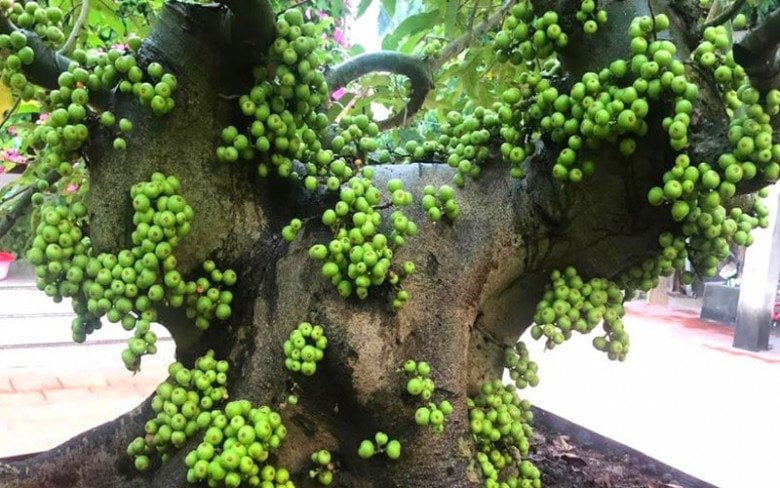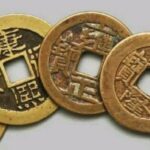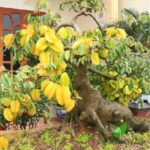The fig tree is believed by the Vietnamese to bring good fortune, abundance, and prosperity to its owners, which is why many choose to plant it in their homes. However, there is a question of the optimal location for planting a fig tree to maximize its benefits. Let’s explore the insights of feng shui experts on this matter.
Where should you plant a fig tree to attract good fortune and wealth?
The fig tree’s name symbolizes “abundance” and “prosperity,” making it a favorite among Vietnamese families. Many households cultivate figs as bonsai or feng shui trees. The clustered and intertwined figs are believed to signify affluence for the entire family. Overall, this tree is considered a symbol of luck, health, wealth, and lasting success. Especially, the fig tree is highly compatible with individuals born in the Chinese zodiac years of the Tiger, Dragon, Snake, and Goat. It will help attract positive energy for these zodiac signs, promoting a balanced life and increased luck.

Fig Trees are Ideal for Those Born in the Years of the Tiger, Dragon, Snake, and Goat
So, where is the best place to plant a fig tree? In reality, the fig tree carries many auspicious meanings, so it is best planted in the front yard or garden, in front of an office, or at a business premises. It is believed that planting a fig tree in such a location will positively influence feng shui, bringing good fortune and prosperity to its owner.
Fig trees also grow rapidly and can attain substantial sizes. Therefore, planting them in the front yard will require regular pruning to maintain a manageable size. Nowadays, to achieve multiple purposes, many people opt for bonsai figs, which are aesthetically pleasing, space-saving, and still harness the tree’s feng shui energy.
If you wish to plant a full-sized fig tree but have limited space in your home and garden, it is advisable to plant it on the side or back of your house. This will allow the tree to grow naturally and reach its full potential, with lush branches, leaves, and fruits.
Some considerations when planting a fig tree
– A mature fig tree can grow quite large, so when planting it in your garden, remember to prune it regularly to maintain a harmonious landscape design.
– There are two common types of figs available in the market: the native fig and the American fig. American figs have a smaller stature and larger fruits. Native figs, on the other hand, have a rustic appearance, with twisted trunks and an abundance of fruits.
– Bonsai figs do not require special care, but if you want the tree to develop more branches, smaller leaves, and shorter branches, regular pruning and fertilizing with superphosphate are necessary. Additionally, regulate the amount and frequency of watering to control the tree’s growth.
– Fertilize your fig tree with well-rotted manure or NPK chemical fertilizer. Apply it during the rainy season, and remember to water afterward to prevent leaf burn.
Medicinal uses of the fig tree

Plant Fig Trees on the Side or Back of Your House
– Headache relief: Apply fresh fig tree resin to two pieces of paper with a diameter of approximately 3 cm, and gently attach them to your temples. This will effectively reduce headache pain.
– Treating boils and inflammation: Apply fresh fig tree resin directly to newly formed boils or inflamed areas. For best results, apply it 2-3 times a day.
– Fig tree bark: Effective in treating blocked milk ducts and breast inflammation.
– Fig leaves: A remedy for lactating mothers experiencing a decrease in milk production.
– Burn treatment: Dry and roast fig leaves, grind them into a fine powder, and mix with pork fat. Apply this mixture to the affected area several times a day.
The Lucky Few: Unlocking Abundance with the Power of the Double Fortune Tree
The laws of the Five Elements dictate that the tree “iron wood orchid” belongs to the Wood element and has a harmonious, generative relationship with the Fire element, as Wood fuels Fire. Thus, this tree is an auspicious presence for homeowners of both the Wood and Fire elements, bringing balance and prosperity to their abodes.






































